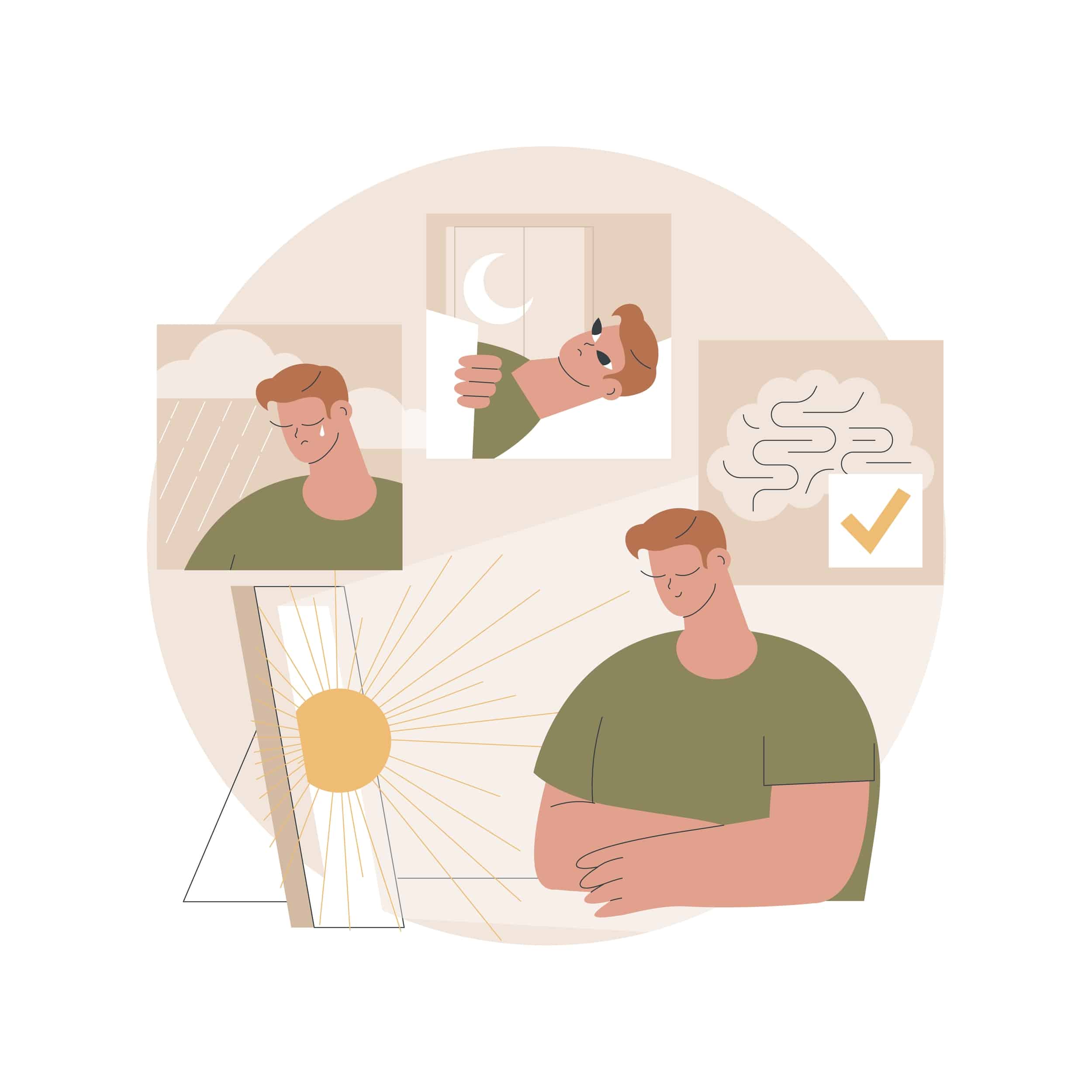
Many individuals with Alzheimer’s disease experience changes in their sleep patterns. Along with neurocognitive impairment, circadian rhythm dysfunctions play a pivotal role in the progression of Alzheimer’s disease. The etiopathogenesis of sleep disturbances and Alzheimer’s disease share several features that suggest they may be a mutually dependent pathway. Pathological mechanisms, such as amyloid production and clearance, neuroinflammation, and oxidative stress, can be linked to circadian rhythm disruptions, sleep deprivation, and Alzheimer’s disease.
A 2019 study assessing the high prevalence of sleep disorders and behavioral and psychological symptoms in late-onset Alzheimer’s disease revealed that 55.9% of Alzheimer’s patients had sleep disorders compared to 15.2% of controls. The study concluded that sleep disorders also affect the neurocognitive function of those with Alzheimer’s disease. Consequently, the relationship between sleep and Alzheimer’s development and progression may provide the foundation for new novel therapeutic targets.
Aside from medication, several therapy-based interventions are being utilized to help combat sleeping challenges in those with Alzheimer’s, including bright light therapy.
Below, we provide information on bright light therapy for Alzheimer’s disease and address the limitations of existing research.
In Alzheimer’s disease, the circadian rhythm, or biological “clock,” can be disrupted, resulting in sleep disorders and disruptive behavior during the night. Bright light therapy aims to regulate the circadian rhythm by gradually shifting sleeping patterns back to a normal sleep-wake pattern, thus reducing sleep-wake disturbances.
For this type of therapy-based intervention, Alzheimer’s patients typically sit in front of a light source for a specific amount of time each day. The source of light could be artificial, such as a full spectrum lamp at 10,000 lux, or natural outdoor light when reliably available. Sleep specialists work with Alzheimer’s patients to determine the ideal timing of light exposure and duration of exposure per day based on symptoms and other life circumstances. Typically, 30-90 minutes of light exposure is recommended.
Overall, current literature suggests that bright light therapy seems to be a promising non-pharmacological approach to treating sleep disturbances in Alzheimer’s disease patients without significant adverse effects.
In addition to assessing the effects of bright light therapy for Alzheimer’s patients with circadian dysfunction, researchers believe this therapy may affect neurocognitive function. Several studies demonstrated that bright light therapy had modest, positive benefits on cognitive function—one of which showed that these improvements were maintained over time.
A systematic review of available literature surrounding the use of bright light therapy for Alzheimer’s disease patients found that the results of current studies were rather mixed and lacked the specificity required to understand the true effect of light therapy on neurocognitive function. They stated that many of these studies were limited due to the narrow nature of assessment methods. More specifically, for many of these studies, the only outcome measure utilized to monitor patients’ neurocognitive status was the Mini-Mental State Exam (MMSE).
The MMSE is a purely cognitive battery that only assesses a small subset of neurocognitive domains. Additionally, traditional cognitive function assessment tools, such as the MMSE and Montreal Cognitive Assessment (MoCA), are not ecologically valid, meaning the design of the evaluation does not match and align with neurocognitive states representative of Activities of Daily Living (ADLs). Because of these limitations, such assessments often produce noisy, highly variable results that lack the specificity and granularity to reasonably conclude the efficacy of bright light therapy for Alzheimer’s.
To adequately understand whether or not bright light therapy is an effective treatment for neurocognitive symptoms associated with Alzheimer’s disease, it is important to assess a breadth of cognitive and functional domains at a highly granular level.
Altoida’s mission is to accelerate and improve drug development, neurological disease research, and patient care. To learn more about our precision-neurology platform and app-based medical device, contact us!